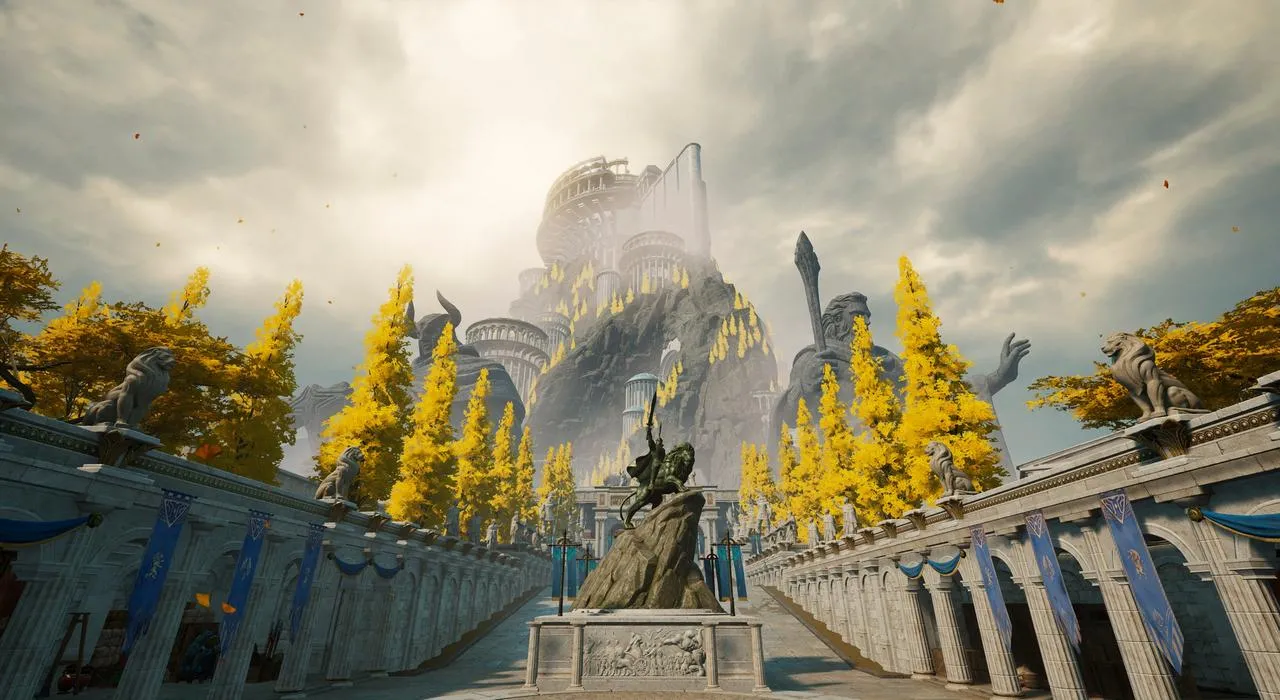
Asterigos: Curse of the Stars Review – A Soulslike for Everyone?
Contents
The Soulslike genre has exploded in popularity, especially following the massive success of FromSoftware’s Elden Ring. New titles like Thymesia, Steelrising, Lies of Pi, and Wo Long: Fallen Dynasty have all entered the fray, each offering their own take on the challenging formula. Developed by Taiwanese studio Acme Gamestudio, Asterigos: Curse of the Stars joins the ranks, drawing inspiration from Greek mythology and boasting Soulslike gameplay. But does it stand out, or is it lost in the crowded Soulslike landscape?
A Welcoming Challenge
Asterigos: Curse of the Stars blends the core elements of Dark Souls with a traditional action RPG experience. Players allocate stats upon leveling up, influencing physical and magical damage output. Familiar mechanics like stamina management and i-frame dodging are present.
 Hilda fighting enemies in Asterigos: Curse of the Stars
Hilda fighting enemies in Asterigos: Curse of the Stars
However, Asterigos offers a more forgiving experience. Basic attacks don’t drain stamina, and death only results in a small experience penalty, unlike the complete loss and retrieval process found in other Soulslike titles. Surprisingly, the game includes a manual save feature, allowing players to save before boss fights or challenging areas, mitigating the risk of significant progress loss.
Three difficulty levels further enhance accessibility. Challenge mode offers a punishing experience where a single hit can be fatal, while Story Mode allows players to experiment with different builds without excessive difficulty. Conduits serve as checkpoints and healing points, reminiscent of Dark Souls’ bonfires, though they also respawn enemies in the area.
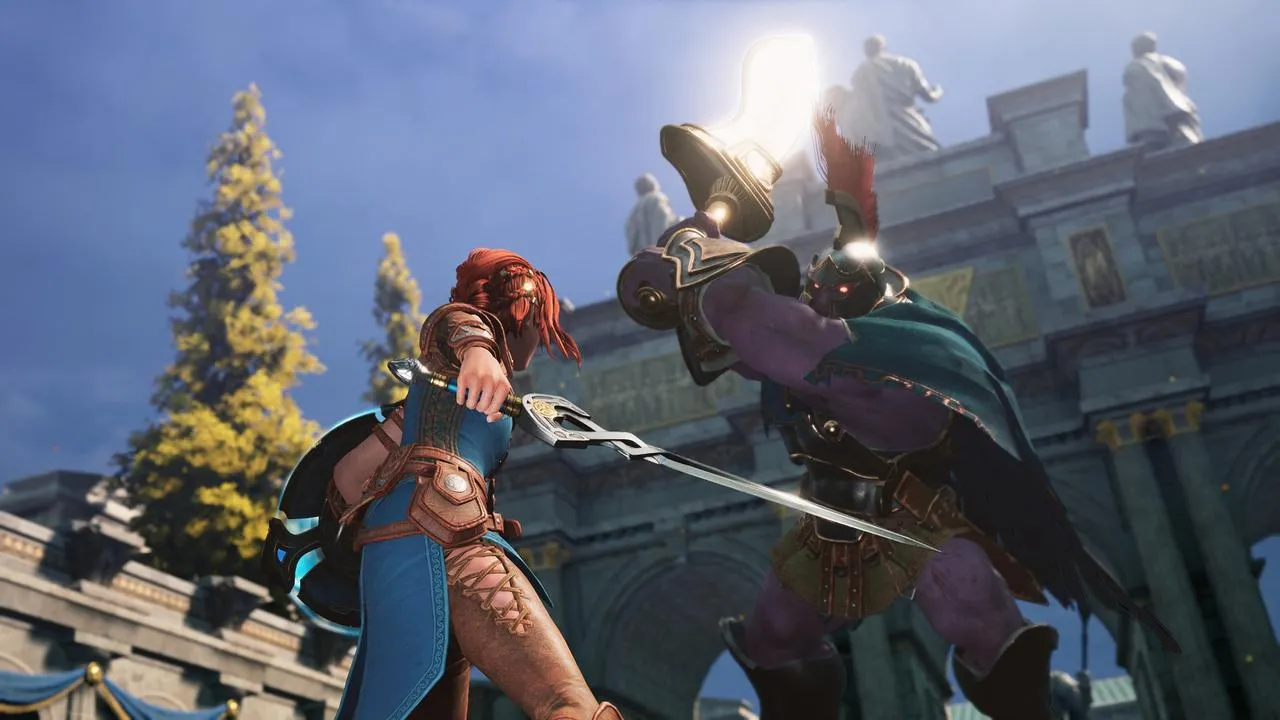 Hilda approaching a Conduit in Asterigos: Curse of the Stars
Hilda approaching a Conduit in Asterigos: Curse of the Stars
The Shelter, the Adherents’ base, functions similarly to Dark Souls’ Firelink Shrine. Players interact with NPCs, accept quests, and craft/upgrade equipment at the blacksmith. Special NPCs appear after specific events, offering unique items to a merchant in exchange for Stardust, the game’s experience currency (akin to Elden Ring‘s Runes).
The inventory system is well-designed, with three quick-access slots for items like healing potions, bombs, and throwing knives. The level design is linear, like Dark Souls 3, with interconnected areas and unlockable shortcuts.
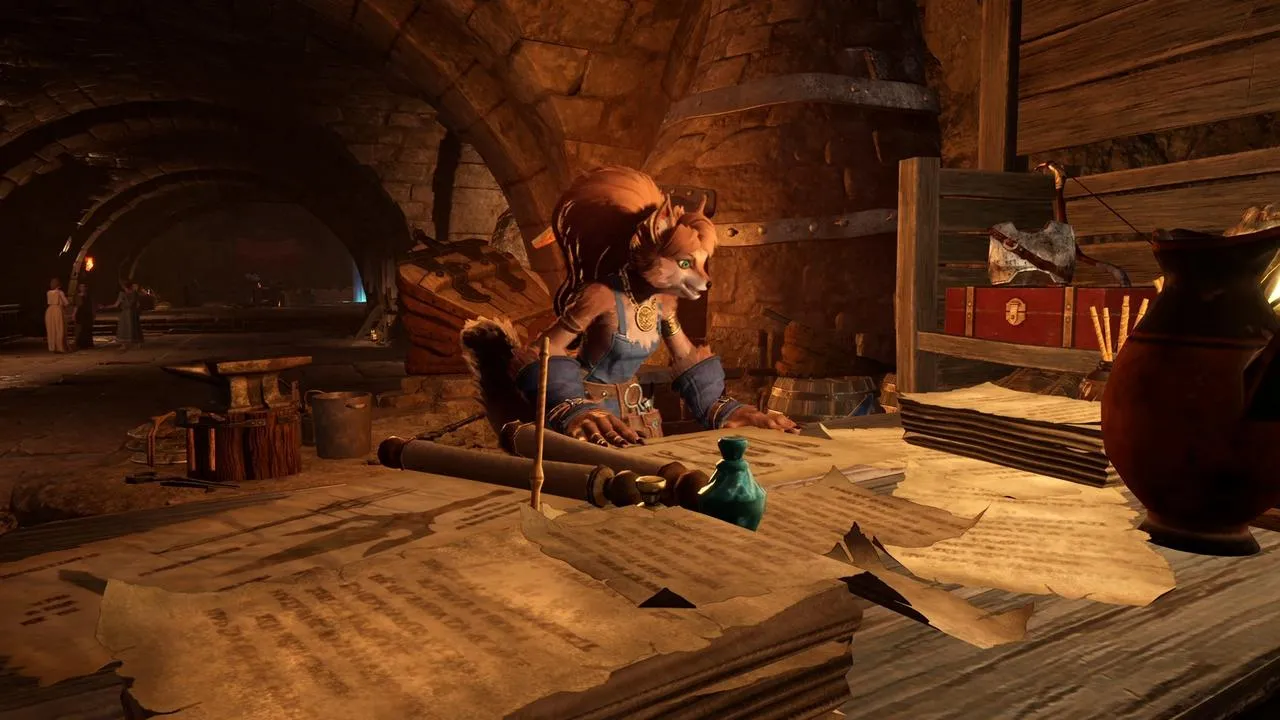 Hilda in the Shelter, interacting with NPCs
Hilda in the Shelter, interacting with NPCs
Replayability and Combat Depth
Asterigos differentiates itself through its dual-wielding combat system. Players choose two of six available weapon types, categorized into defense (sword and shield, spear), melee (dual blades, hammer), and magic (staff, bracelets). Combining attacks with different weapons creates unique combos.
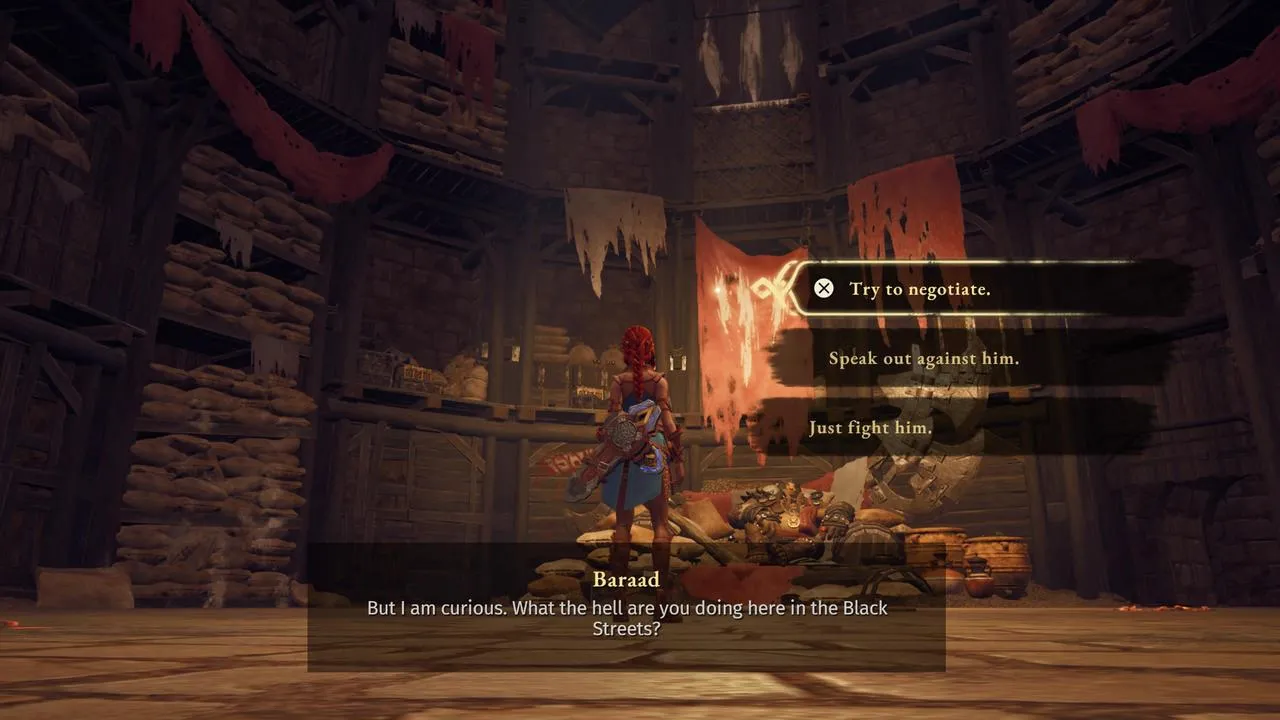 Hilda exploring a dungeon in Asterigos: Curse of the Stars
Hilda exploring a dungeon in Asterigos: Curse of the Stars
A robust talent tree offers extensive build customization. Talents provide passive buffs, stat boosts, and unlock powerful new skills for each weapon type. Players equip skills to four hotkeys, using mana replenished by dealing or receiving damage. Elemental enchantments (fire, ice, lightning) add further tactical depth, exploiting enemy weaknesses.
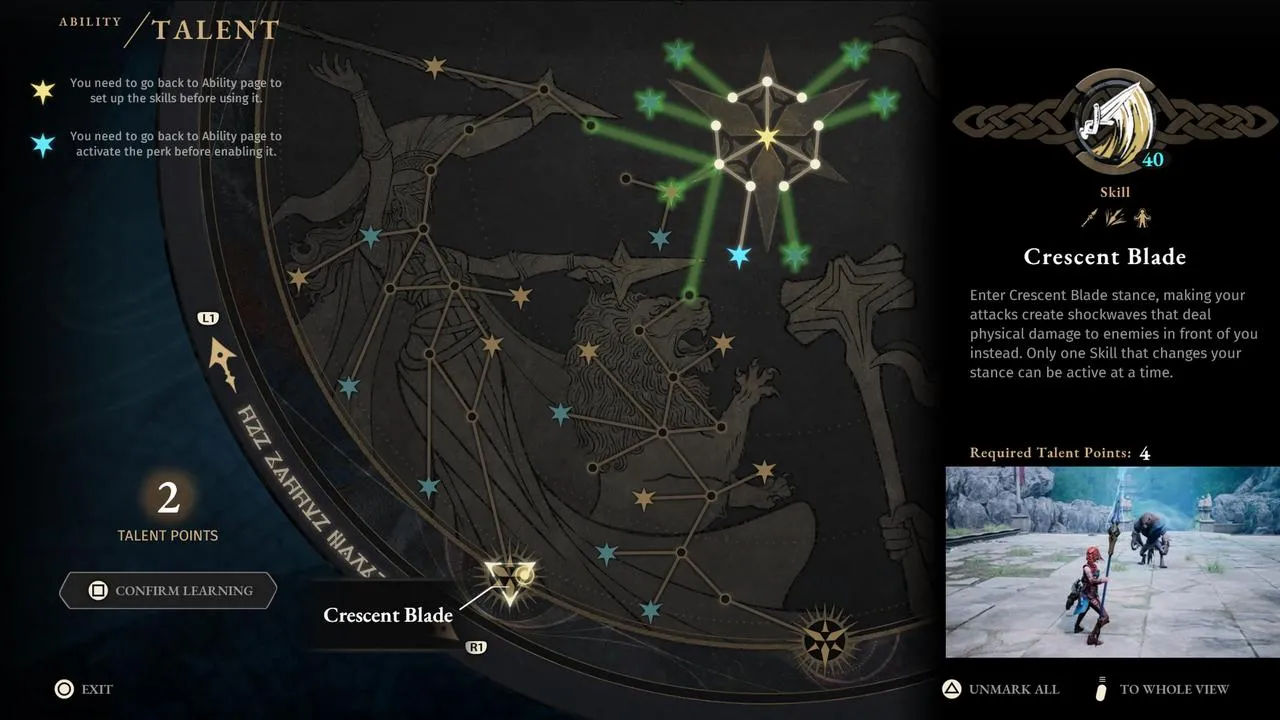 Hilda fighting a boss in Asterigos: Curse of the Stars
Hilda fighting a boss in Asterigos: Curse of the Stars
While the weapon selection is limited, the combination possibilities and skill upgrades encourage experimentation and replayability. Dialogue choices also impact the narrative, offering different outcomes and scenarios. Boss fights, a hallmark of Soulslike games, are well-designed, featuring impressive visuals, challenging mechanics, and memorable soundtracks.
Room for Improvement
Asterigos suffers from a common linear RPG pitfall: predictable exploration. Hidden paths and secrets often yield underwhelming rewards, mainly upgrade materials or healing potions. Unlike Sekiro, exploration rarely unveils powerful items, unique equipment, or hidden bosses.
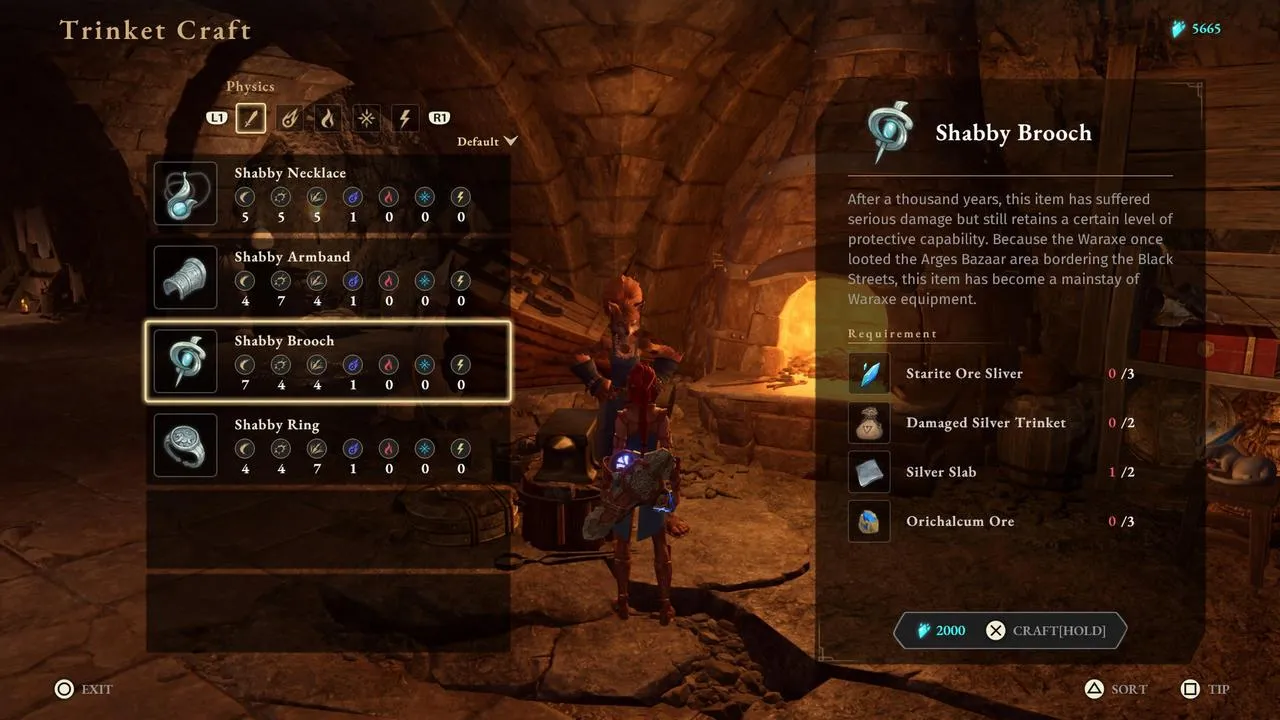 Exploring the environment in Asterigos: Curse of the Stars
Exploring the environment in Asterigos: Curse of the Stars
Player agency is also limited. Choices and actions often lead to a single outcome, restricting narrative branching. Customization is largely confined to combat, with few cosmetic options or meaningful equipment changes.
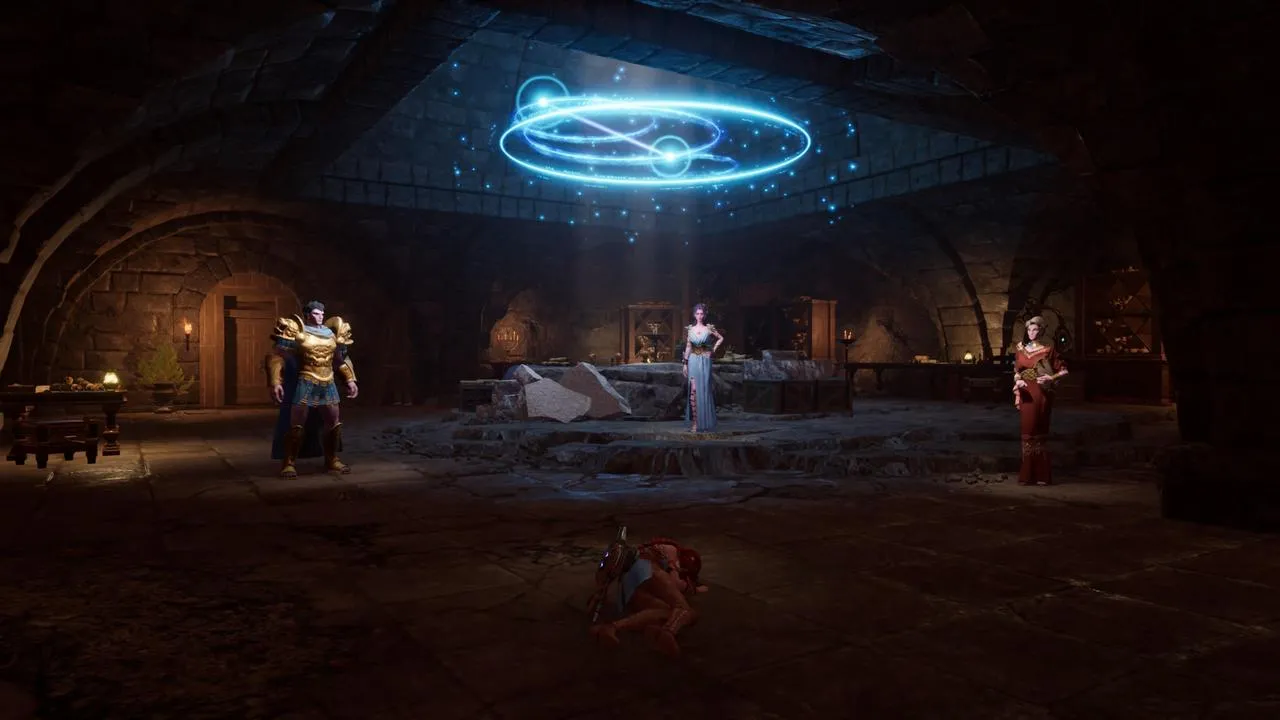 Asterigos: Curse of the Stars environment
Asterigos: Curse of the Stars environment
Technical Shortcomings
Technical issues detract from the experience. Repetitive environments, basic lighting, and stiff animations are prevalent. Performance issues and poor mouse/keyboard optimization plague the PC version. The camera can be problematic, especially in tight spaces, leading to unfair ambushes. Enemy AI is inconsistent, occasionally exhibiting illogical behavior.
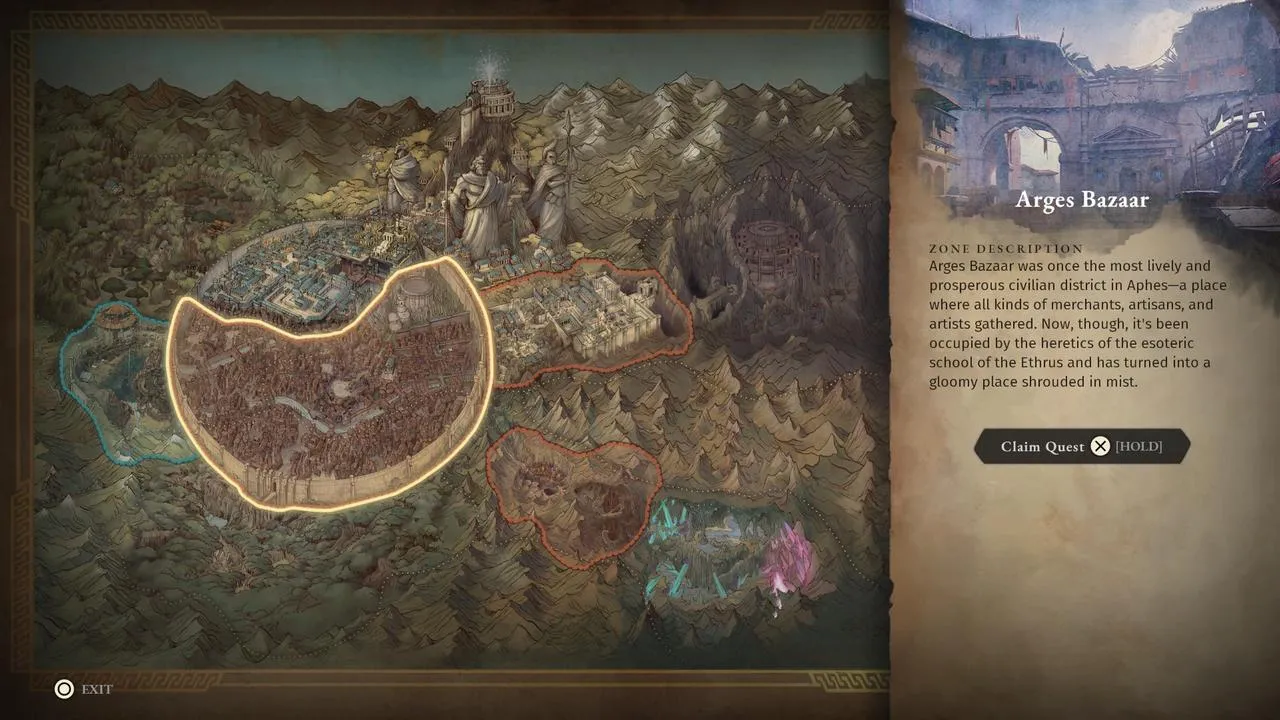 Asterigos: Curse of the Stars combat
Asterigos: Curse of the Stars combat
Conclusion
Asterigos: Curse of the Stars offers a more accessible entry point into the Soulslike genre, with its forgiving mechanics and adjustable difficulty. Its dual-wielding combat and extensive talent system provide depth and replayability. However, predictable exploration, limited player agency, and technical shortcomings hold it back from true greatness. While Asterigos doesn’t redefine the genre, it offers a satisfying experience for players seeking a less punishing Soulslike adventure.





Comments (0)